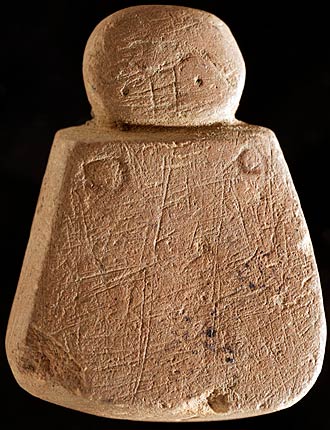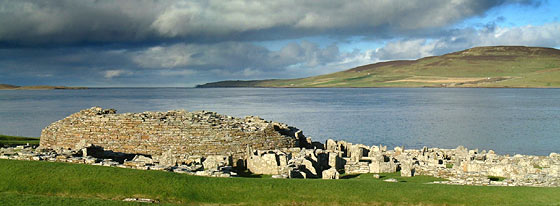Hello dear friends!
I was tidying up some philatelic files and came across this beautiful booklet of ten (10) postage stamps depicting Scottish archeological sites, issued by Great Britain, for exclusive sale by Historic Scotland.
I don’t remember at which property I bought same as there are over 300 properties in the care of Historic Scotland and I have visited so many since 2006 when I first landed on Scottish soil.

This booklet consist of five stamps depicting Orkney’s archeology and five other featuring the Scottish flag.
- 1. Skara Brae Village
2. Maes Howe
3. Orkney Venus
4. Ring of Brodgar
5. Broch of Gurness
Upon googling about this series of postage stamps, I came across a forum entry stating:
In 2011, a booklet was issued in GB for sale by Historic Scotland. The fourth stamp shows the Ring of Brodgar on Orkney. Except it doesn’t. These are the Calanais (Callanish) Stones, located on Lewis, a mere 230 miles away! How can these errors get past the first approval process?
Source: thestampforum.boards.net
An unknown stamp design error ? I had not noticed…what a pleasant surprise! 🙂
Design errors on postage stamps are often caught during the distribution process, when large numbers of postal workers are scrutinizing the new stamp; although officials may elect to withdraw all the stamps at that point, it is very difficult to retrieve every one of them, and in these instances a few may end up being sold and used. The exact circumstance are important, because once the stamp is sold to a customer, whether or not against the postal service’s rules, it is considered to be legitimate.
Source: Wikiwand.com

Callanish Standing Stones. Hebrides, Scotland | Photo: Trip Advisor
The Callanish Stones on the Isle of Lewis are an arrangement of standing stones placed in a cruciform pattern with a central stone circle. They were erected in the late Neolithic era, and were a focus for ritual activity during the Bronze Age.
THE RING OF BRODGAR
As you can see, the image below does not reflect the picture on the booklet postage stamp. The distance between the standing stones is much wider.

Ring of Brodgar. Standing Stones. Orkney. Scotland
Whether or not the Brodgar stones were used to measure the passage of time, the area in which the circle is located is ideal for the purpose. Using landmarks such as notches between the surrounding hills, it is very easy to chart the seasons from the positions of the rising and setting sun throughout the year.
WALKING THROUGH HISTORY
SKARA BRAE
A Neolithic village 5,000 years old aged, one of the most perfectly preserved Stone Age villages in Europe, was covered for hundreds of years by a sand dune on the shore of the Bay of Skaill, Mainland, Orkney Islands, Scotland.
Exposed by a great storm in 1850, four buildings were excavated during the 1860s by William Watt.

Skara Brae Neolithic Village – The Watch Stone – Maeshowe burial chamber © Scotiana 2016
MAES HOWE
Norse crusaders broke into Maeshowe in the mid-1100s, long after it had fallen from use. They too left their mark on the site: this time as graffiti carved in runes all over the main chamber’s walls.
Maeshowe is part of the Heart of Neolithic Orkney World Heritage Site.

Orkney Maes Howe chambered cairn © Scotiana 2003
ORKEY VENUS
A 5000 year old carving discovered in the Orkney Islands is being hailed as the earliest human figure ever found in Scotland.

Picture copyright Historic Scotland
The human figurine — dubbed the “Westray Wifie” by the islanders — was described as a “find of astonishing rarity”.
Measuring just 41mm tall, 31mm wide and 12mm thick, it is, to date,the only known Neolithic carving of a human form to have been discovered in Scotland — with only two other examples in the whole of the British mainland.
Source: Orkneyjar
BROCH OF GURNESS
Brochs are mysterious features of Scottish archaeology. It is estimated that about seven hundred brochs once existed across Scotland.

The Broch of Gurness – Photo: Orkneyjar.com
The remains of the broch were discovered by Orcadian poet and antiquarian, Robert Rendall. While sketching on the knowe, one of the legs of Rendall’s stool sank into the mound. Carefully removing some of the nearby stones, Rendall uncovered a staircase leading down into the mound.
Source: Orkneyjar
Hope you enjoyed the tour. 🙂
Until next, stay safe and strong!
Janice


Leave a Reply